Content
Oddly enough, but on March 1 of every year spring comes, and this year, of course, is no exception! Soon, very soon the snow will melt and bare the orphaned beds in the gardens of the Russians. And immediately your hands will be combed, you will want to immediately fill them with plantings. But before that, you must first grow the seedlings so that there is something to plant in the beds and greenhouses. And, of course, first of all, the question arises: what varieties of tomatoes should be grown this year? After all, there are so many of them that you can get confused.
Naturally, every self-respecting vegetable grower keeps in a stash several of his favorite varieties of tomatoes, which have shown their best side, but every year, through the efforts of breeders, more and more new ones appear. What if there is something extraordinary among them, which even the nearest neighbors have not yet grown? Therefore, now I want to talk about the Dean tomato variety, the photo of which is located below.
Description of the variety
Dina's tomato is a mid-early variety, it will take 85-110 days from sowing seeds to full maturity, this period depends on the region of growing the Dina tomato variety. Not a hybrid, but a variety, which means that you can leave seeds from it. The bush is low (50-70 cm), which gives an advantage in care, with medium branching, not a standard one. Grown in a greenhouse, but also tolerates open ground well. The fruits of Dean's tomato have a beautiful yellow color, rather large (120-160 grams), even, smooth, have the shape not of a ball, but an ellipse and a pleasant sweetish taste.
The combination of yellow Dean tomatoes with red varieties of tomatoes will make a jar of pickles elegant, which will have a beneficial effect on the mood. Dina's yellow tomato variety is a fruitful one - one bush gives about 4 kg of wonderful fruits.
Advantages over other varieties
How does Dean's tomato variety win:
- resistance to septoria and macrosporiosis;
- high content of carotene;
- good drought tolerance;
- consistently high yields;
- long shelf life;
- good transport tolerance;
- excellent commercial qualities;
- long fruiting.
What are the differences between yellow and red tomatoes? It's not just about color. Important nutrients are found in those and other tomatoes in different quantities.
In addition, the calorie content of yellow tomatoes is much lower than that of red ones. The content of substances that can cause allergies is also low, in contrast to the red varieties.
Signs of disease and how to deal with them
The disadvantages of Dean's yellow tomatoes include the possibility of late blight disease, watery and apical rot.
Late blight
When brown spots begin to appear on tomato leaves, it means that the plant is already sick. Soon the fruits will be covered with the same spots. Subsequently, they will deform, become ugly and begin to rot, exuding an unpleasant odor. To prevent the spread diseases on tomatoes Dinah, you can use special drugs that are sold in horticultural departments.
Watery rot
This disease occurs due to sucking or gnawing pests, such as moth caterpillars. Most often, the lower part of the stem is affected - it softens, turns brown, decomposes, becoming liquid and emitting an unpleasant odor.Infection of the Dean tomato fruit begins in the area of the stalk or at the site of injury - it becomes covered with watery spots, then the tomato softens and decays. The most important thing is that the soil under such plants, as well as plant debris and even seeds, retain the infection. Therefore, in order to combat watery rot, you should:
- thin out too thick plantings;
- remove affected plants;
- carry out the necessary measures to destroy the scoop caterpillars;
- collect the affected fruits;
- after harvesting, remove all plant residues and neutralize the soil.
Top rot
A dark spot on the top of the fruit is the first sign of apical rot. This stain becomes darker over time and, as it were, falls inward, due to which the fruit of Dean's tomato dries up and hardens. Usually this disease is not massive, it manifests itself on individual fruits, at most, on the hand. By regularly inspecting the plants and removing the affected fruit in time, the spread of apical rot can be prevented. To save Dean's tomatoes, you need to sprinkle them with calcium nitrate and chalk suspension.
Many summer residents do not want to grow tomatoes precisely because of their susceptibility to the above diseases. But today there are a lot of funds, the timely use of which will save the planting of tomatoes from such diseases. In the end, you can turn to folk methods of dealing with diseases. Here are just a few of them.
Folk remedies for combating late blight and rot on yellow tomatoes
- Using garlic... Garlic has a detrimental effect on mushroom spores. The first time you need to spray Dean's tomatoes before the fruit ovaries begin to appear, the second time - after 8-10 days. Further spraying is carried out every two weeks. To make a solution for sprinkling Dean's tomatoes, grind the garlic, take about a glass and pour it into a bucket of water. After a day, drain and dilute about two grams of potassium permanganate in this infusion.
- With salt... Dissolve a glass of ordinary salt in a bucket of warm water and sprinkle Dean's tomatoes with this solution. This spraying will create a kind of protection for the plant in the form of a salt film. But since this measure is just the prevention of diseases, leaves with signs of the disease should be removed before spraying.
- With the help of kefir... Ferment kefir in a warm place for 2 days, pour one liter into a bucket of water, mix very well. Spray Dean's tomato seedlings with this composition two weeks after planting in the ground. Then spray every week. This remedy is also a disease prevention.
If you do not forget at the same time to huddle, loosen the soil, feed and water Dean's yellow tomatoes in time, then this variety will thank you for such care with a rich harvest of incredibly tasty and healthy fruits.
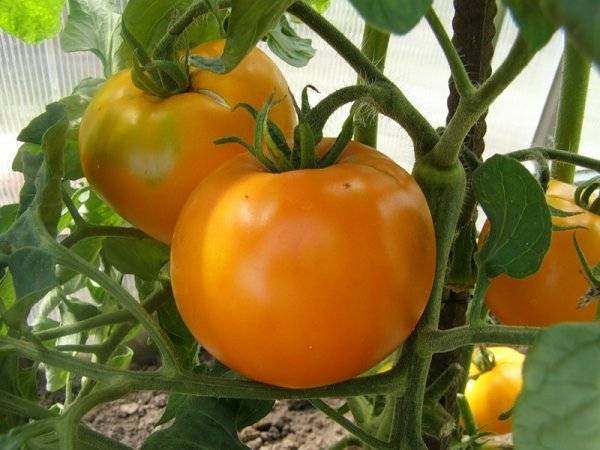
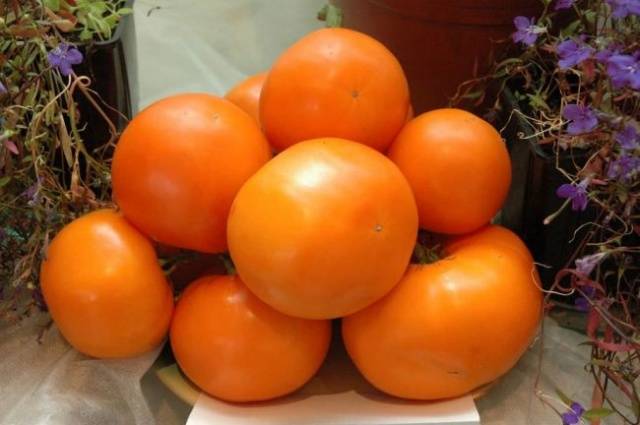
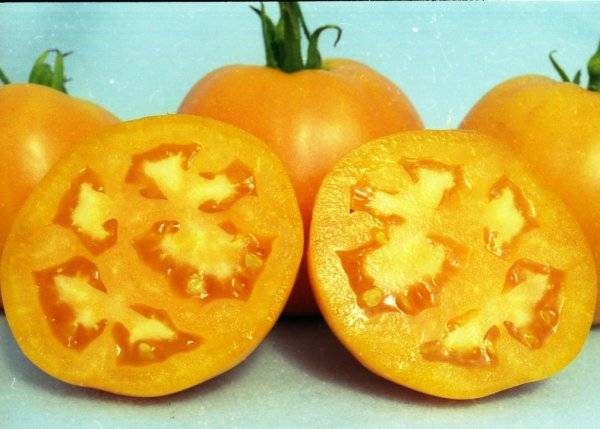
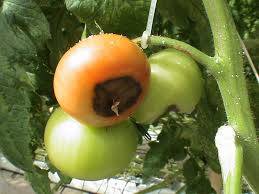
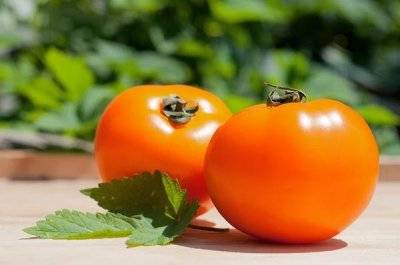








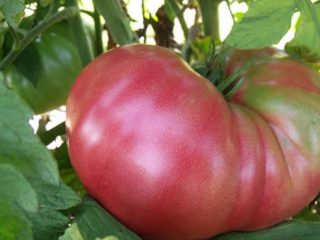
Dina's variety is grown in the open field as the main variety of tomatoes. Fruit quality is very good - even, disease-free. They are especially good in salads, as well as pickles. In the open ground of the Moscow region they give a good harvest.